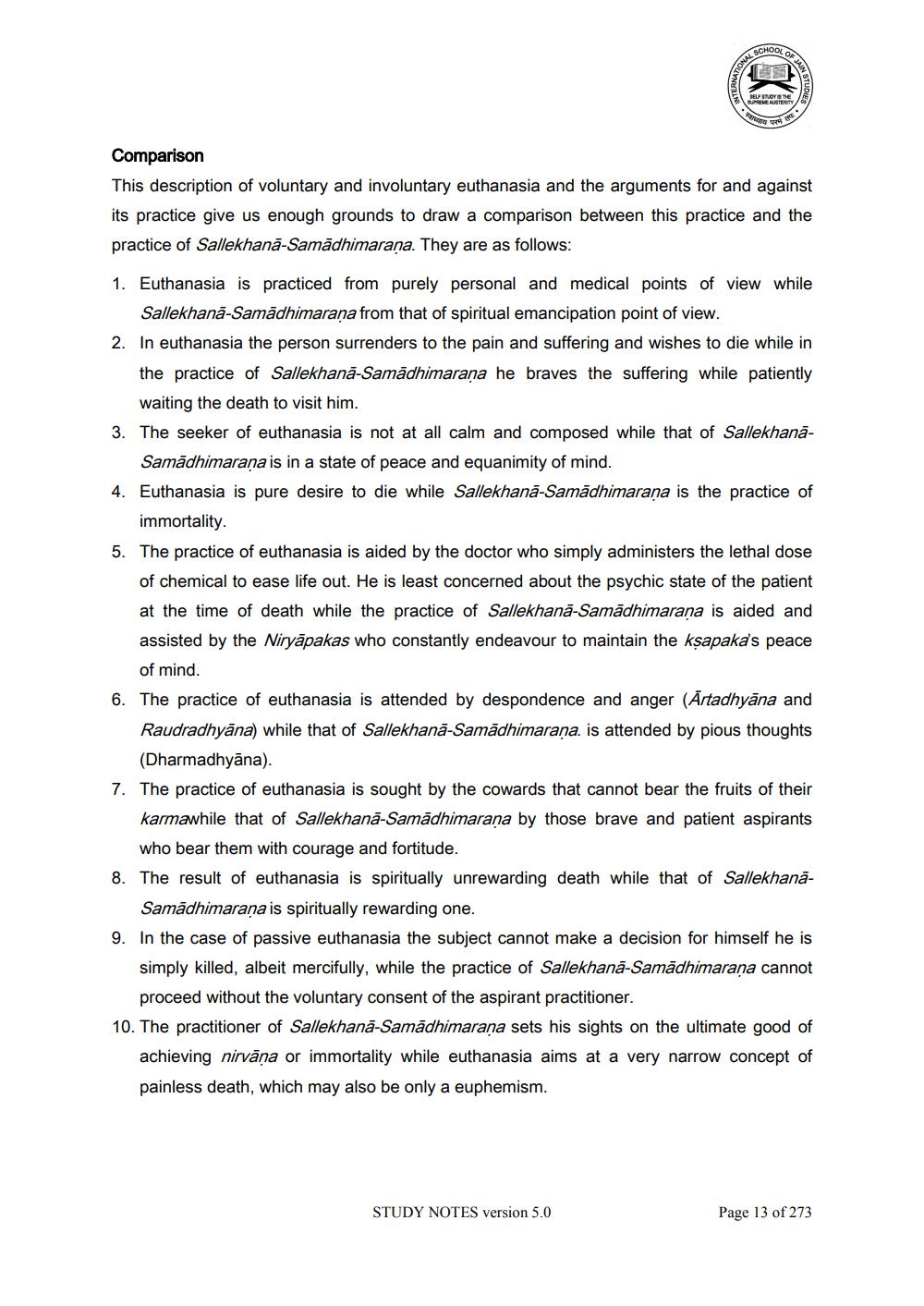________________
Comparison This description of voluntary and involuntary euthanasia and the arguments for and against its practice give us enough grounds to draw a comparison between this practice and the practice of Sallekhana-Samādhimarana. They are as follows:
1. Euthanasia is practiced from purely personal and medical points of view while
Sallekhana-Samadhimarana from that of spiritual emancipation point of view. 2. In euthanasia the person surrenders to the pain and suffering and wishes to die while in
the practice of Sallekhana-Samādhimarana he braves the suffering while patiently
waiting the death to visit him. 3. The seeker of euthanasia is not at all calm and composed while that of Sallekhana
Samadhimarana is in a state of peace and equanimity of mind. 4. Euthanasia is pure desire to die while Sallekhana-Samadhimarana is the practice of
immortality. 5. The practice of euthanasia is aided by the doctor who simply administers the lethal dose
of chemical to ease life out. He is least concerned about the psychic state of the patient at the time of death while the practice of Sallekhana-Samādhimarana is aided and assisted by the Niryāpakas who constantly endeavour to maintain the ksapaka's peace
of mind. 6. The practice of euthanasia is attended by despondence and anger (Ārtadhyāna and
Raudradhyāna) while that of Sallekhana-Samādhimaraņa. is attended by pious thoughts
(Dharmadhyāna). 7. The practice of euthanasia is sought by the cowards that cannot bear the fruits of their
karmawhile that of Sallekhana-Samadhimarana by those brave and patient aspirants
who bear them with courage and fortitude. 8. The result of euthanasia is spiritually unrewarding death while that of Sallekhana
Samādhimaraṇa is spiritually rewarding one. 9. In the case of passive euthanasia the subject cannot make a decision for himself he is
simply killed, albeit mercifully, while the practice of Sallekhana-Samadhimarana cannot
proceed without the voluntary consent of the aspirant practitioner. 10. The practitioner of Sallekhanā-Samādhimaraṇa sets his sights on the ultimate good of
achieving nirvāṇa or immortality while euthanasia aims at a very narrow concept of painless death, which may also be only a euphemism.
STUDY NOTES version 5.0
Page 13 of 273




